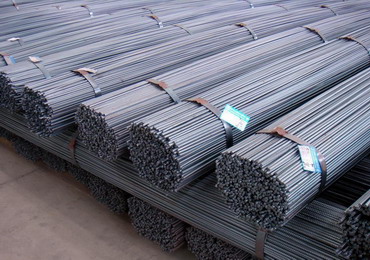 Home > News
Home > News



JSW STEEL is putting on a brave face for FY16, forecasting a 6% increase in its domestic crude steel production and a 7% increase in finished steel sales. In FY15, it had closed with a 4% output growth and a 2% sales growth. Two reasons caused this slow growth: sluggish domestic demand and a jump in steel imports.
Slower global economic growth, especially in China, is affecting the demand for steel. That is sending surplus steel to countries such as India, where demand is still growing. What’s worse, the relative strength of the rupee versus the dollar, compared with the other emerging market currencies, has affected domestic competitiveness. This has caused higher imports and affected steel exports.
Global steel prices have been under pressure, too. One factor driving global steel prices down has been falling iron ore prices. This should have benefited JSW steel,but restricted domestic supply meant the local prices have not fallen as much as global prices. The falling steel prices hurt JSW Steel, but it could not benefit from the declining iron ore prices.
This toxic mixture of events meant that, in the March quarter, JSW Steel’s standalone sales declined 12% to Rs.10,785 crore from a year ago. But lower material costs contributed to better gross margin. However, a sharp inflation in employee costs and other operating costs hurt profitability. Its operating profit margin narrowed by 4.7 percentage points from a year ago and by 3.2 percentage points, sequentially. Its consolidated results, too, reveal a similarly sharp decline. After meeting its interest costs, its standalone net profit was down 76.4% while its consolidated net profit fell 87%.
After a bad quarter, what lies ahead?
JSW Steel plans to keep increasing its share of value-added products. Even if volume growth is weak, this could benefit margins. An easing in domestic iron-ore supply conditions should see costs decline. A weakening of the rupee versus the dollar in recent times is also a positive, but only if it continues.
The most important factor that will determine the direction of steel prices is global demand. China holds most of the cards in this regard and there are no signs yet of a revival in its steel consumption, or of a definitive decline in its steel production. Steel prices may remain under pressure in the first half of FY16.
Though JSW may see margins benefit a bit from lower raw material prices, falling steel prices will cast a shadow on its performance. The Indian government is planning measures to curb steel imports. If it succeeds, prices could rebound swiftly. The JSW Steel stock has fallen by 29% in the past six months, but it is not yet time to say that the worst is over.
XINSTEEL NEWS